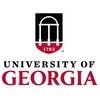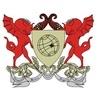Explore all the information on
Fish feed and nutrition
Welcome to the page about Fish feed and nutrition of Engormix; a source of knowledge on Fish feed and nutrition.
In commercialization and high stocking density of culture practice, the feeding has the significant contribution for fast growth and high yields. The aquafeed is potentiated with many ingredients in highly balanced nutritious components for enhancing the digestive mechanisms in fish and shrimp body. It leads the better body weights, high health, optimum immunity, more survivals, less incidence of disease etc in aquaculture ponds. Spirulina is a unique high...
Comments : 18
Recommendations: 6
Aquasaf Tilapia is a program designed to maximise productivity and sustainability of tilapia production. The program addresses some the most pressing challenges of tilapia such as mass mortalities caused by pathogens, low growth patterns that are associated with chronic gut issues, economic losses due to unoptimized feed conversion ratios, while reducing producer’s dependency on antibiotics....
Comments : 4
Recommendations: 3


PRICHEMIN MIX
Priya's PRICHEMIN MIX is a mineral supplement for aquaculture. It consists of a mix of mineral chelats from aminoacids
Suggested link
Rob Strathman (Famsun) discusses how to achieve safe and efficient production of aquafeed and pet food, during FIGAP 2022 in Guadalajara, Mexico....
Comments : 0
Recommendations: 2
INTRODUCTION The acute hepatopancreatic necrosis disease (AHPND) has affected shrimp farming in several countries, like, Vietnam, Malaysia, Thailand, Mexico and in Philipines.1-6 The unique symptoms and characteristics of this disease consisting of massive sloughing of hepatopancreas epithelial cells. The external symptoms in infected shrimp like, empty stomach, bluish body color and shrunken hepatopancreas could be observed. The rate of mortaly is significantly higher...
Comments : 2
Recommendations: 0


PRICHEMIN MIX
Priya's PRICHEMIN MIX is a mineral supplement for aquaculture. It consists of a mix of mineral chelats from aminoacids
Suggested link
The growing cost of diseases in tilapia Bacterial, viral and parasitic diseases can disrupt tilapia production regardless of the biological stage, production system and culture intensity. Streptococcosis (caused mainly by different serotypes...
Comments : 0
Recommendations: 1
After decades of work in Tifton, Georgia, University of Georgia researchers think soldier flies will be a viable alternative to fish meal in aquaculture diets. Early work with the black soldier fly ( Hermetia illucens ) used manure as the growth media, but recent efforts show that food byproducts can be a better soldier fly diet. Catfish grow well on soldier flies and other fish, including tilapia and rainbow trout have been fed the prepupae. The most...
Comments : 167
Recommendations: 2


PRICHEMIN MIX
Priya's PRICHEMIN MIX is a mineral supplement for aquaculture. It consists of a mix of mineral chelats from aminoacids
Suggested link
Introduction Much information is given ( Willem Van Cotthem, 2012 ) on Opuntia ficus-indica as an aloes. In Arabic is called Sabr, Teen Shoky, Teen Barbary, Hendy, Hendia, or Barshomy. It could be used commercially and industrially in treatment of some diseases (eyes, face, bone, prostate, colon, stomach, and intestine) and in cosmetic manufactures. It is a permanent plant grows in arid zones and tolerates drought and salt for its leaves that are filled...
Comments : 2
Recommendations: 6
Introduction The fish nutrition has advanced with the expansion of aquaculture in order to achieve better performance rates. Thus, diets should provide all the nutrients and energy as a way to optimize the fish development. Among the nutrients, the fatty acids are essential for growth and survival, as well one of the most important sources of energy. The fatty acids of the omega 3 family are not produced by the fish, requiring supplementation in...
Comments : 1
Recommendations: 0


PRICHEMIN MIX
Priya's PRICHEMIN MIX is a mineral supplement for aquaculture. It consists of a mix of mineral chelats from aminoacids
Suggested link
Physiological stress is one of the main contributing factors of disease outbreaks and reduced performances in the production of tilapia. Compared to the production of land animals, there are only a limited number of practical and cost effective disease treatment methods for aquaculture. Therefore, good stress management practices are an...
Comments : 1
Recommendations: 3
The latest reports on aquaculture production in Mexico establish that there has been a considerable increase in this agro-industrial activity. This rebound in aquatic organisms production for human consumption originates due to each year more producers are interested in venturing into tilapia (Oreochromissp.) farming. According to official numbers, Mexico is the ninth largest tilapia producer worldwide, with the state of Chiapas being the largest producer in the country thanks to the large...
Comments : 0
Recommendations: 3


PRICHEMIN MIX
Priya's PRICHEMIN MIX is a mineral supplement for aquaculture. It consists of a mix of mineral chelats from aminoacids
Suggested link
Hammermills and Roller Mills for Aquaculture Feeds Hammermills are commonly used for grinding a broad range of materials used in the production of aquaculture feeds. Since most species of fish, crustaceans, and shellfish have a very short digestive tract, they require a finely ground, highly processed feed in order to obtain good feed efficiency. Additionally, most immature and many adult specimens produced in the...
Comments : 2
Recommendations: 0
Introduction The world demand for sea food is increasing dramatically year by year, although an annual upper limit of 100 million tons is set so as not to exhaust reserves. It is for this reason that there is a considerable move towards modernizing and intensifying fish farming. To be economically viable, fish farming must be competitive, which means that feed costs amongst others...
Comments : 1
Recommendations: 0


PRICHEMIN MIX
Priya's PRICHEMIN MIX is a mineral supplement for aquaculture. It consists of a mix of mineral chelats from aminoacids
Suggested link
Dr. Chi Man - Senior Global Project Manager at BASF, talks about "Improving Shrimp Production by Monoglycerides"....
Comments : 0
Recommendations: 0
Introduction In Egypt, shrimp culture has fluctuated progress. Although shrimp culture is profitable, but shrimp disease is still one of the major problems. Shrimp’s origin is from the eastern Pacific waters. In practice of shrimp culture, shrimp farmers often use their habit and experience, including the harvest time ( Nour et al ., 2004). Litopenaeus vannamei is the most important penaeid shrimp species farmed earth ( Alcivar- Warren...
Comments : 1
Recommendations: 2


PRICHEMIN MIX
Priya's PRICHEMIN MIX is a mineral supplement for aquaculture. It consists of a mix of mineral chelats from aminoacids
Suggested link
Marel is pleased to announce an agreement to acquire Wenger Manufacturing LLC, a global leader in processing solutions focused on pet food, plant-based proteins, and aqua feed. The acquisition of Wenger is a platform investment into new, complementary and attractive growth markets for Marel and will form the fourth business segment alongside poultry, meat and fish. The acquisition is subject to customary closing conditions such as anti-trust and approval of Wenger’s...
Comments : 0
Recommendations: 0
Disease management and prevention has become one of the top priorities for the aquaculture industry. This is due partly to economic losses, caused by disrupted production, and partly to sustainability issues and increased pressure to reduce the use of antibiotics and...
Comments : 4
Recommendations: 4


PRICHEMIN MIX
Priya's PRICHEMIN MIX is a mineral supplement for aquaculture. It consists of a mix of mineral chelats from aminoacids
Suggested link
The fish protein hydrolysate market from pet food and animal feed application is anticipated to attain lucrative revenue growth on account of growing prevalence of food-borne infections and diseases among animals. Consumers are adopting high protein diet for their pets and animals to safeguard them from potential diseases.
Rising imposition of stringent regulations on waste disposal could have a positive impact on the market. Governments around the world are ensuring the safe...
Comments : 0
Recommendations: 0
SafMannan® is a proven effective solution to help shrimp to have better resistance and performance!
...
Comments : 4
Recommendations: 8


PRICHEMIN MIX
Priya's PRICHEMIN MIX is a mineral supplement for aquaculture. It consists of a mix of mineral chelats from aminoacids
Suggested link
Introduction: 70% Ascorbic Acid (vitamin C) is a feed stable, microencapsulated (encapsulated) form of vitamin C for the aquaculture industry. It is also used in animal feeds. Maxx Performance’s proprietary barrier coating technology offers the best in highly stabilized vitamin C for optimum stability in the feeds for aquaculture and animals worldwide. 70% encapsulated, stabilized, vitamin C offers constant feed stability and proven enhanced bioavailability by using GRAS...
Comments : 3
Recommendations: 6
1. Introduction Poultry and fish are both increasing in popularity as protein sources in human diets. Fish consumption has increased by 122% between 1990 and 2018 [1] with an over 500% rise in aquaculture production globally over the same timescale. Salmon production is estimated to reach 2.7 million tonnes (MT) by 2021, compared to 0.8 MT in 2000 [2]. Similarly, poultry meat production is also increasing year on year and is predicted to have reached 137 MT in 2020 [1]. This...
Comments : 0
Recommendations: 0














